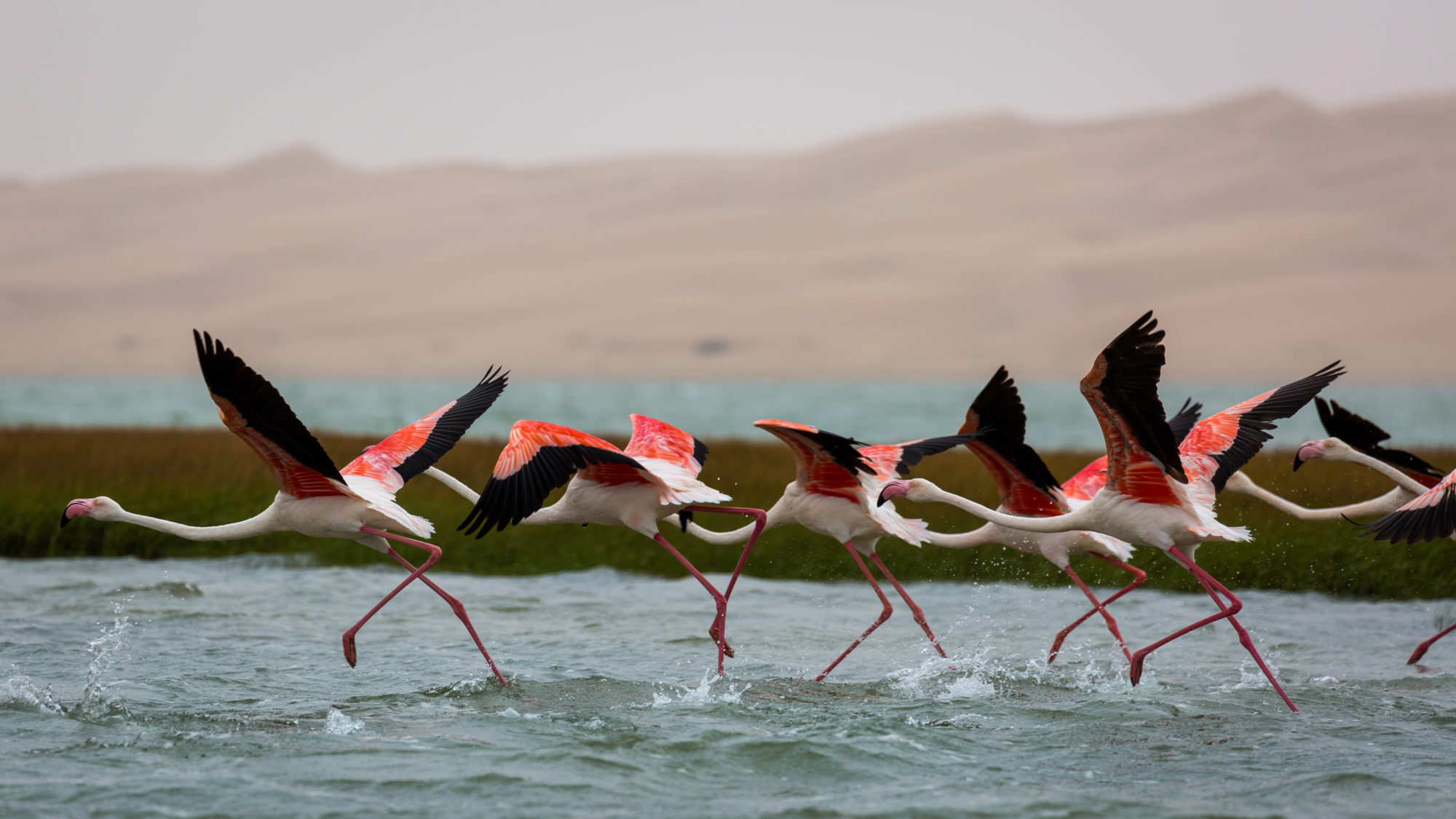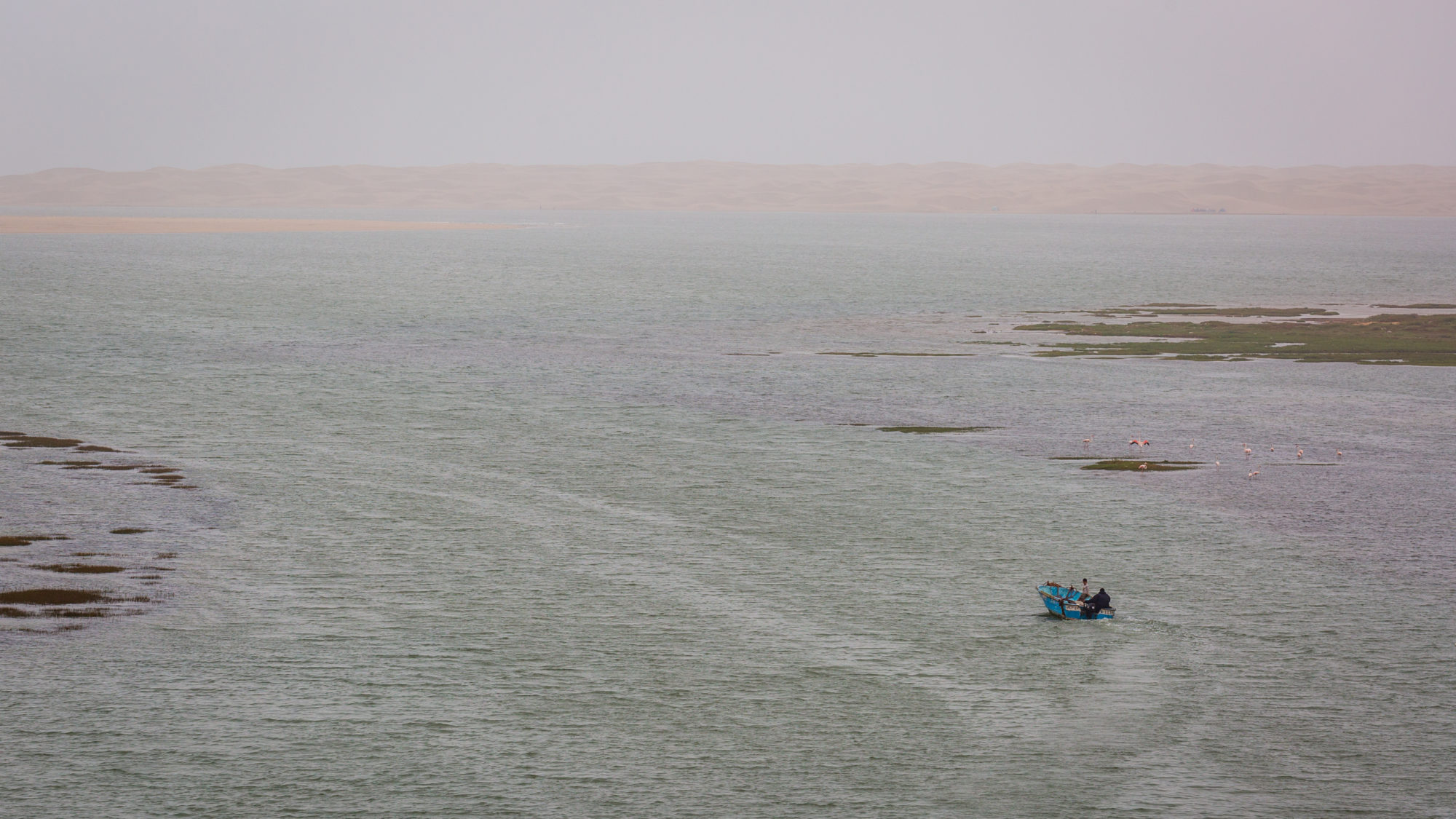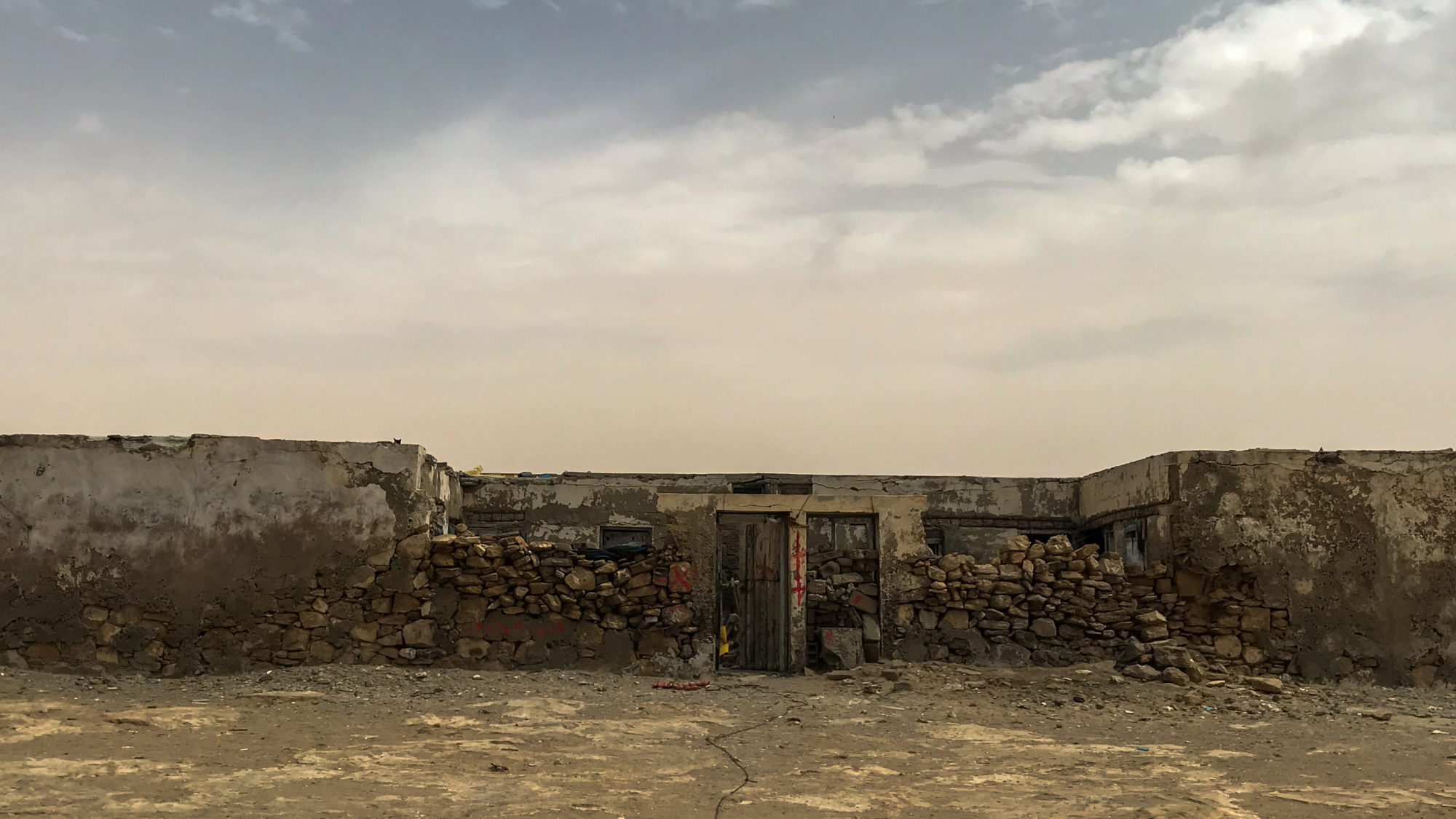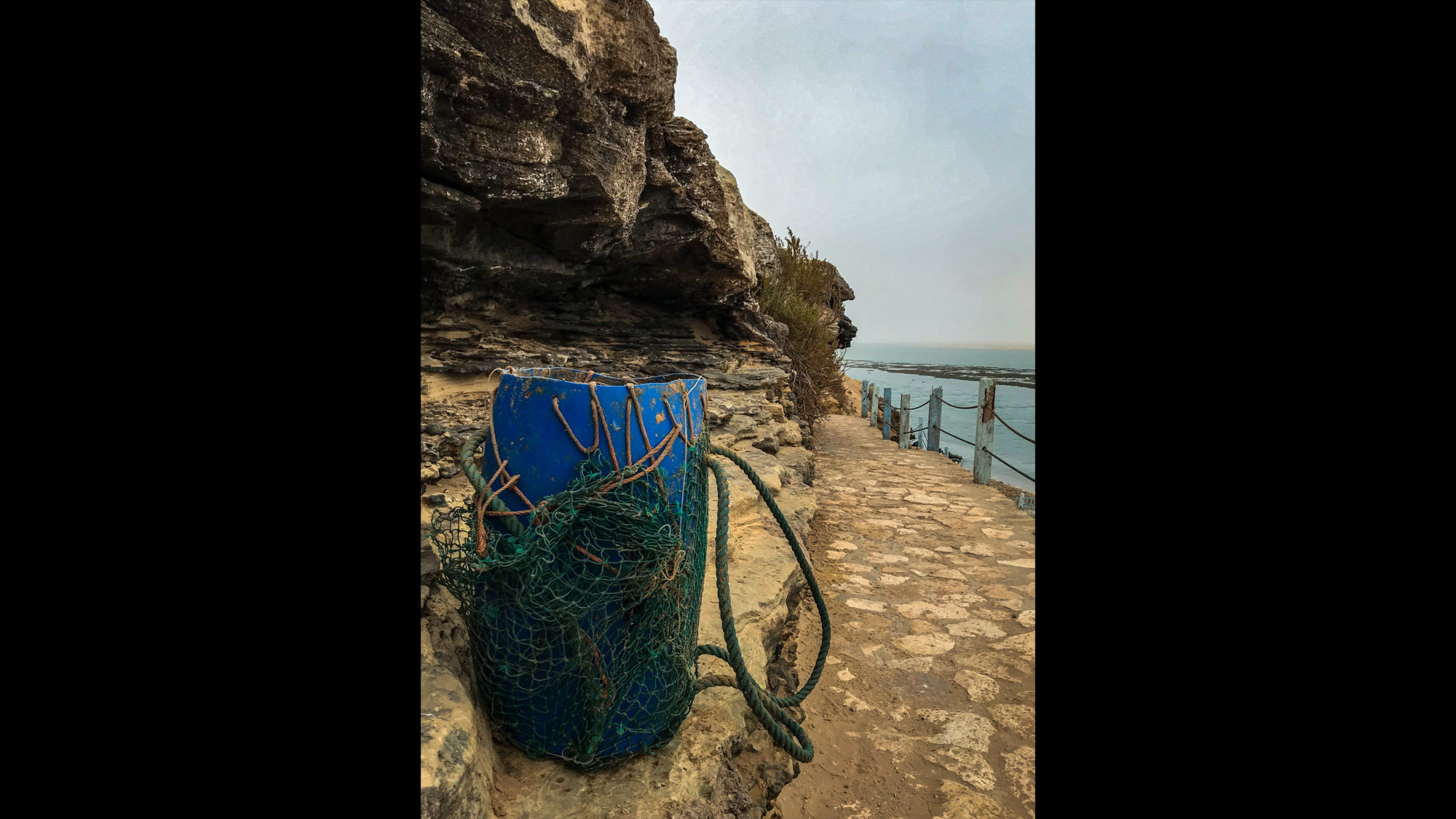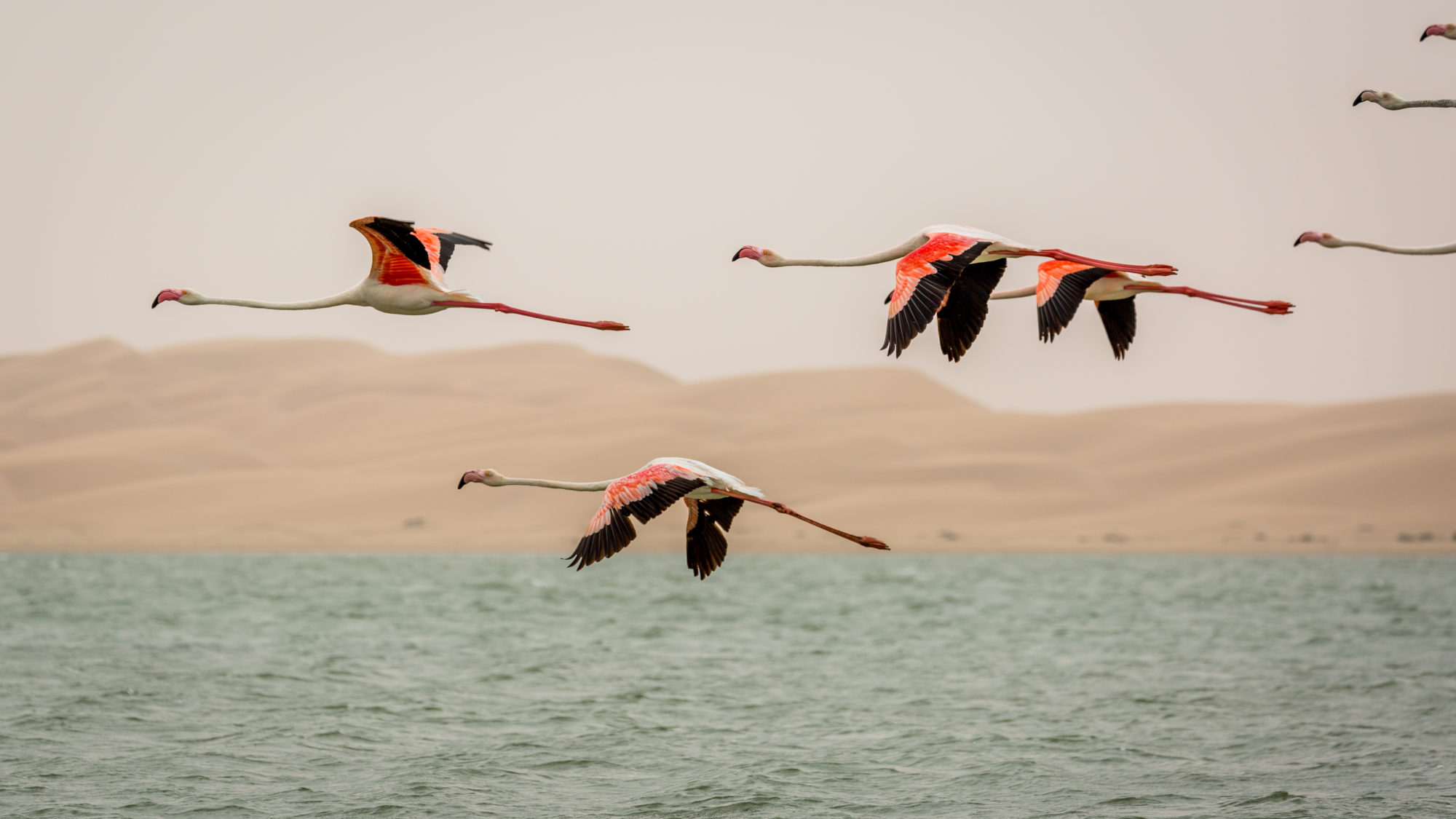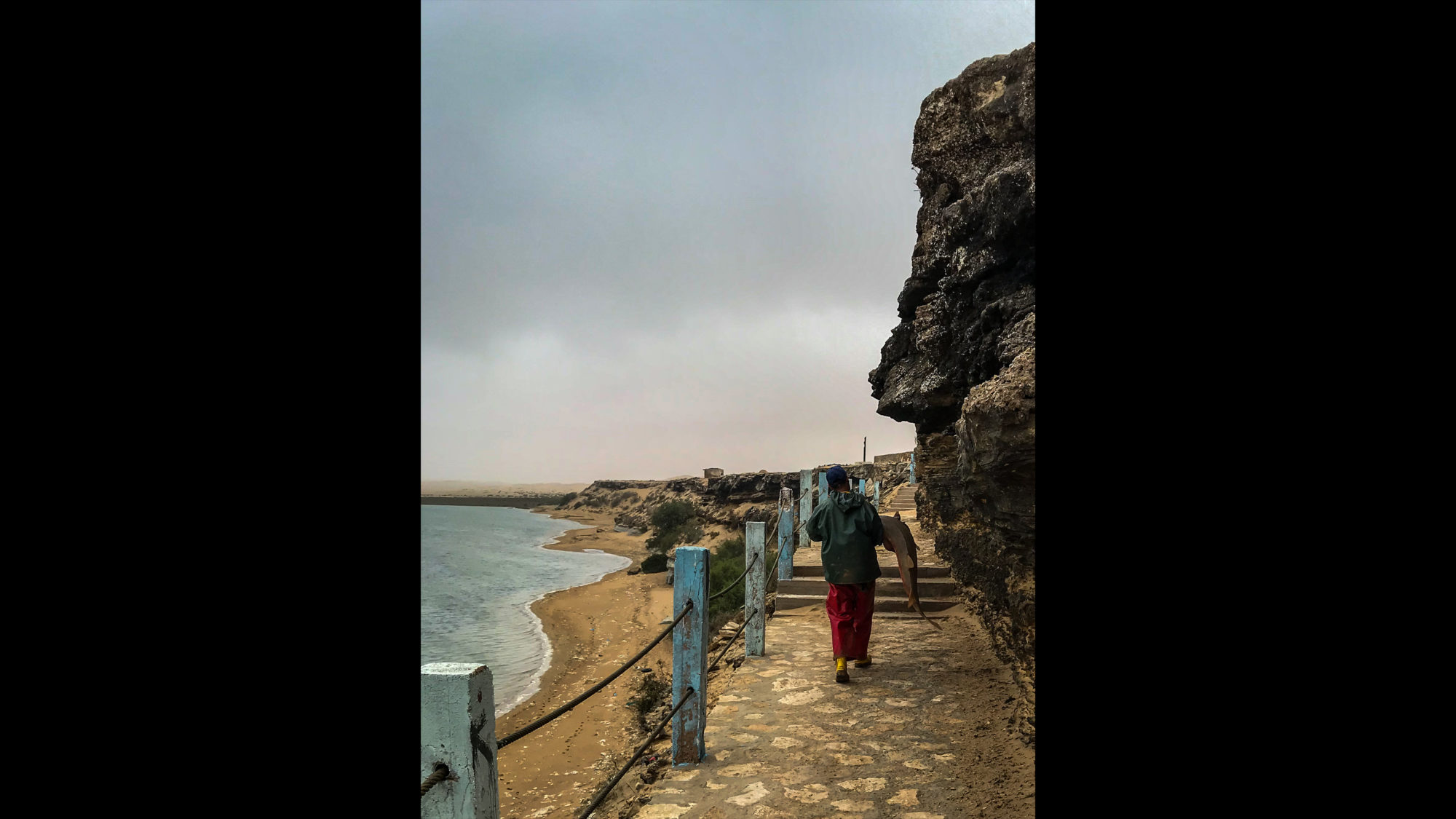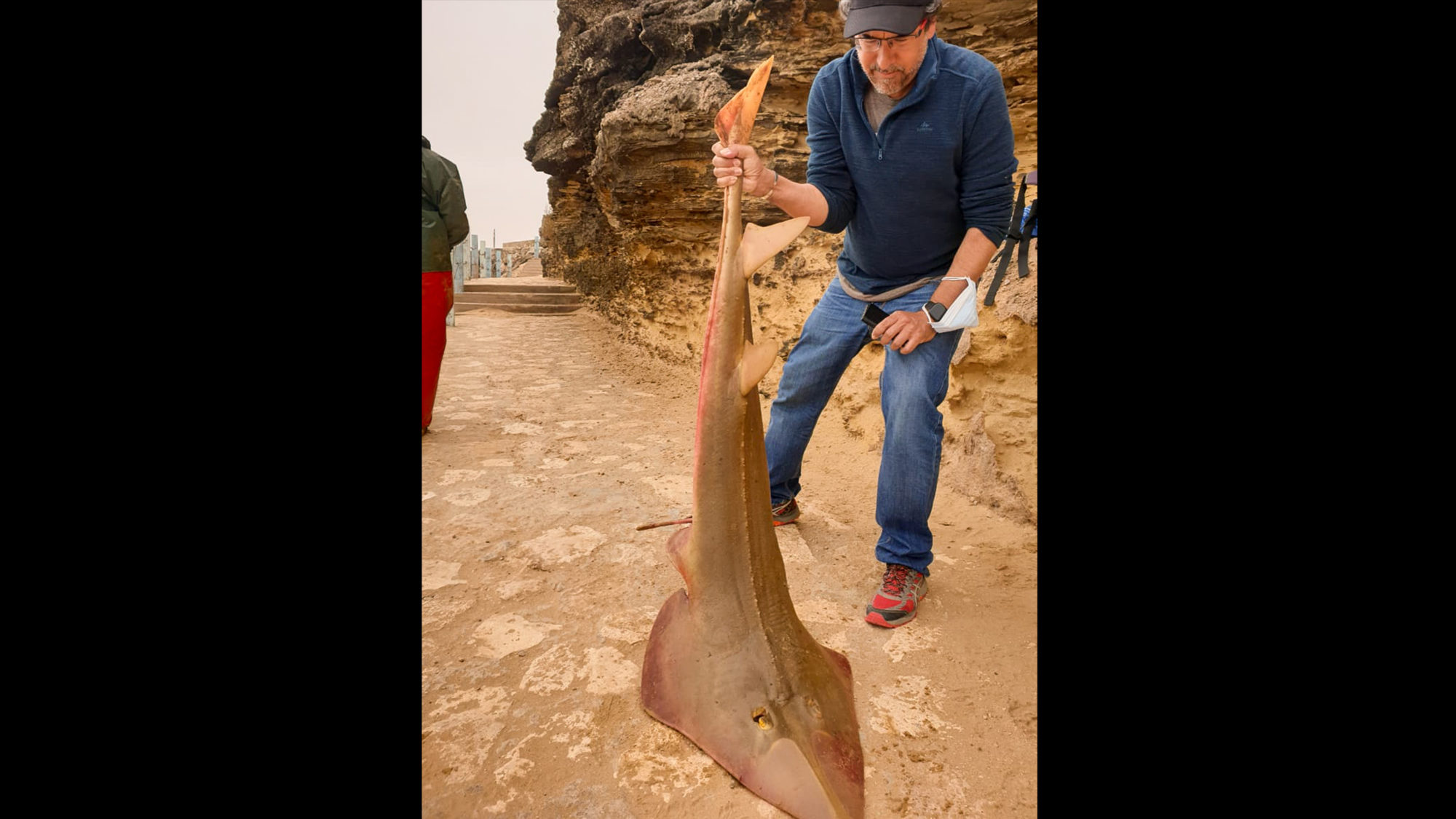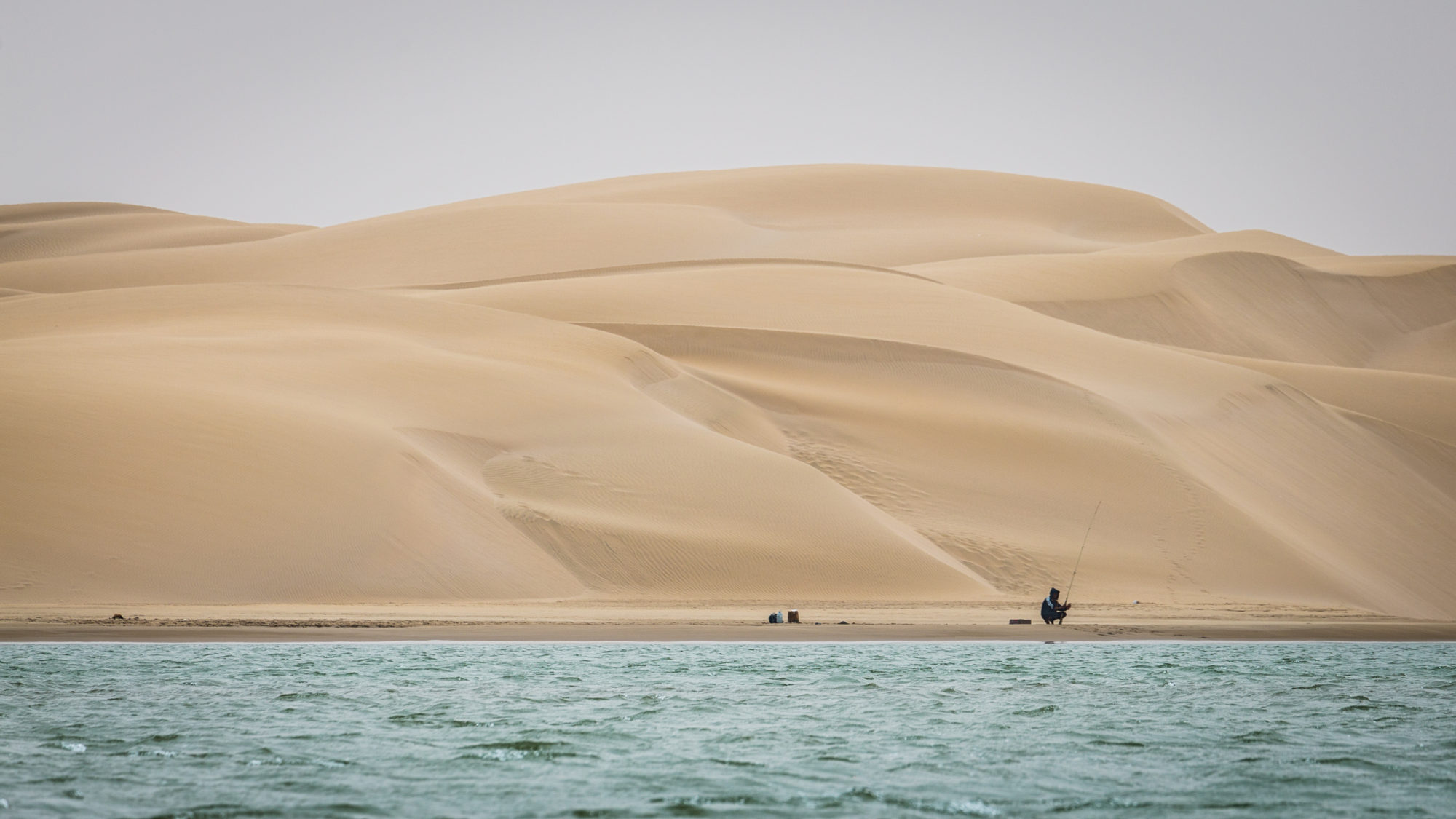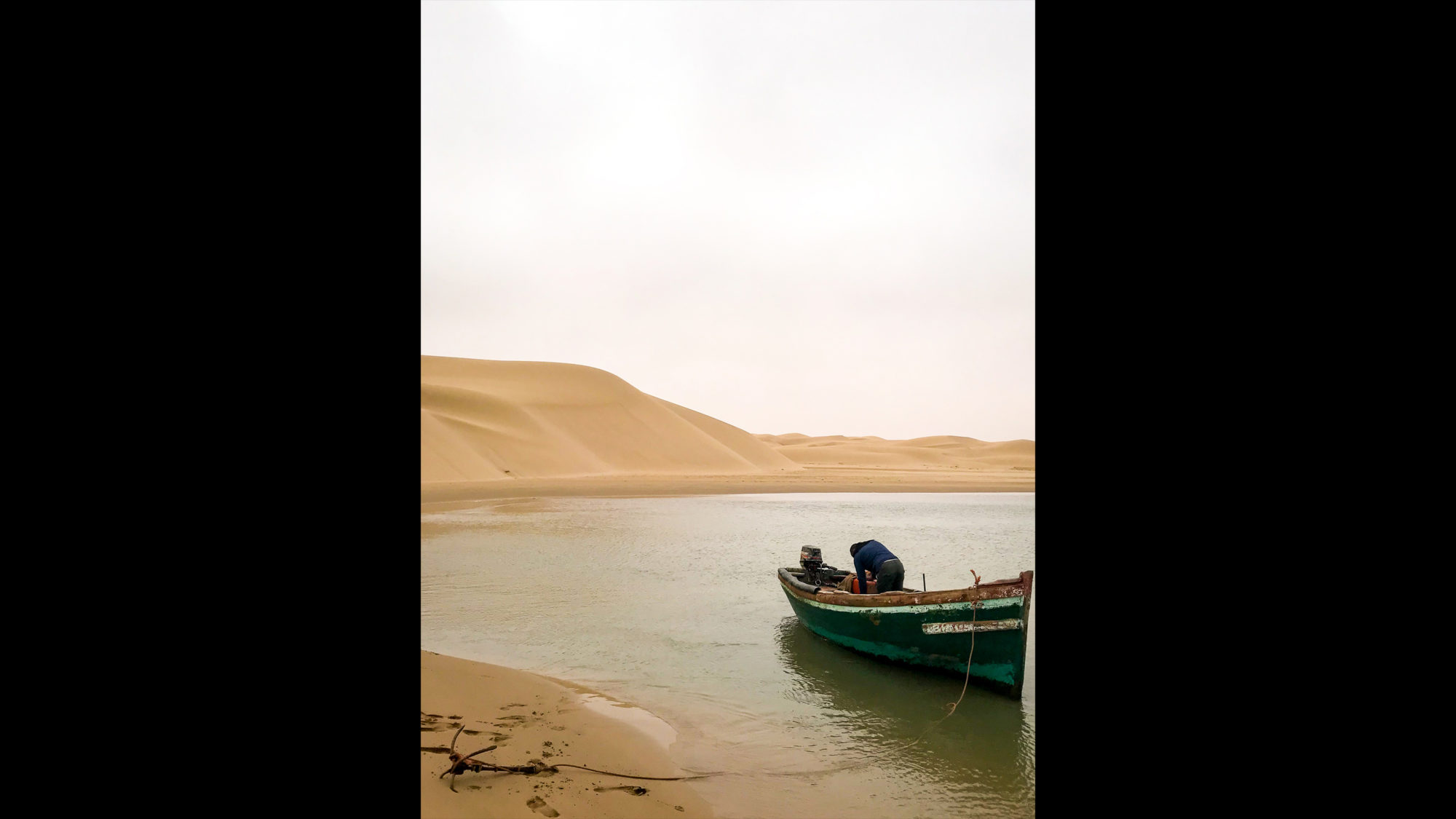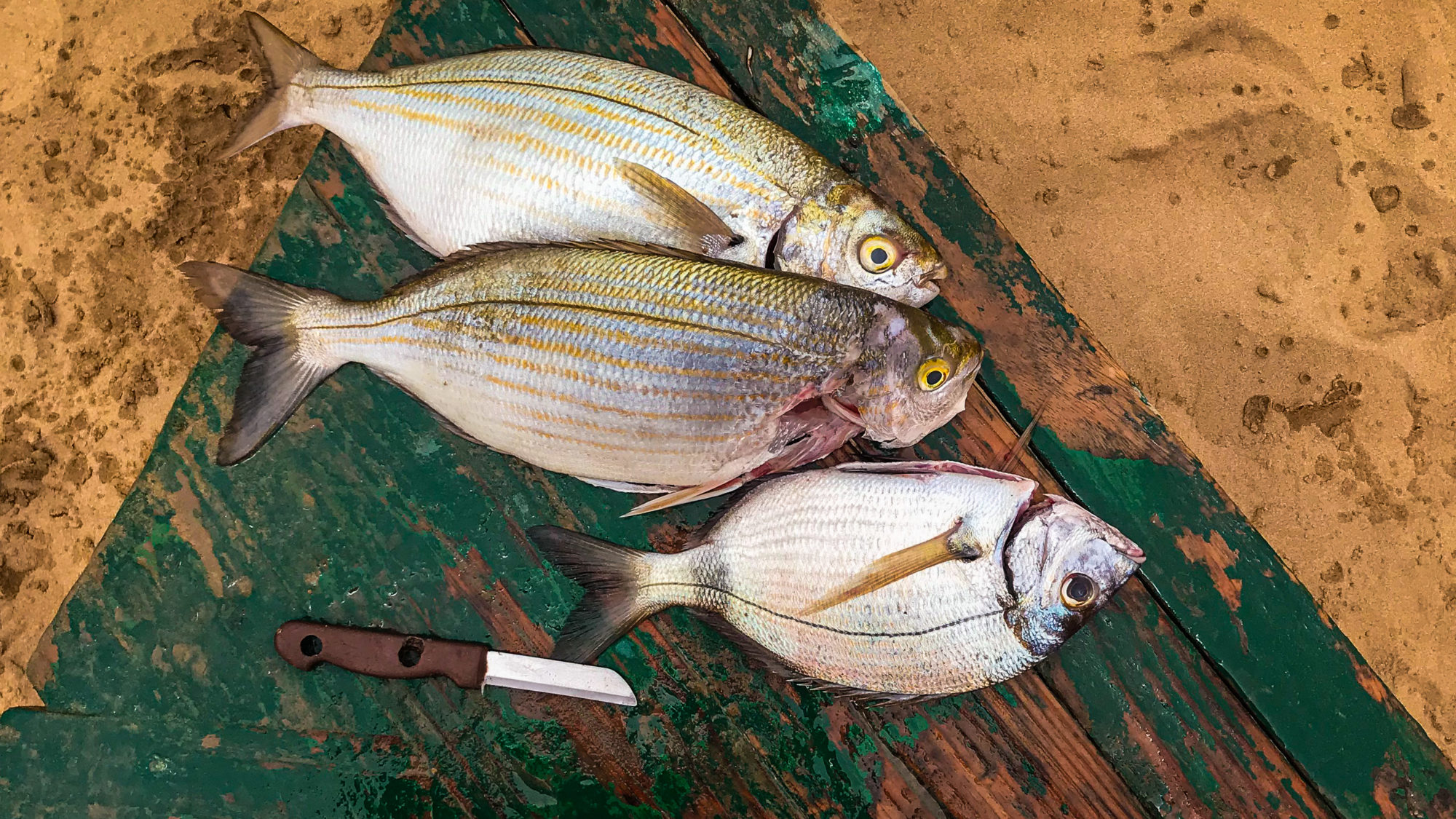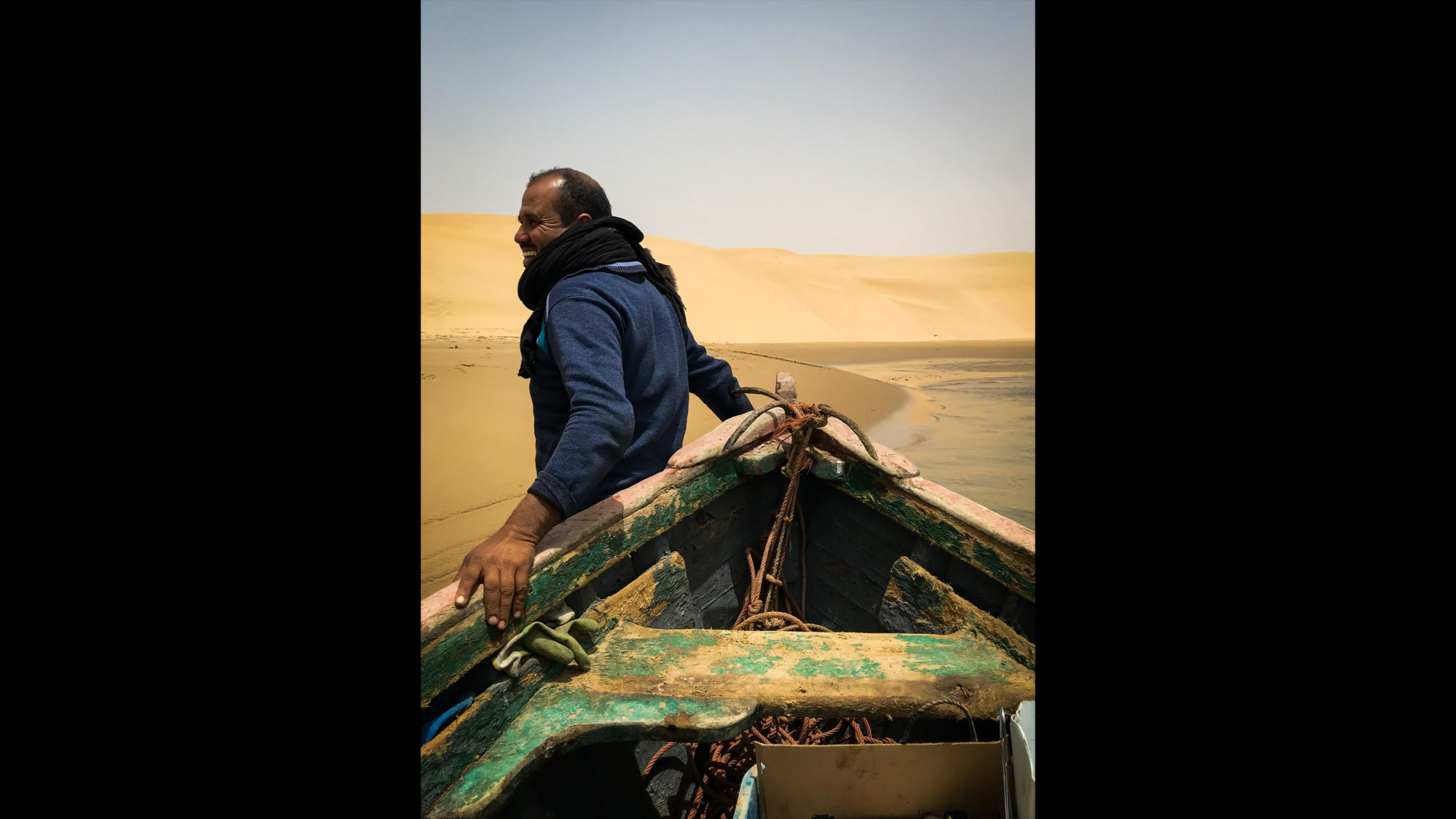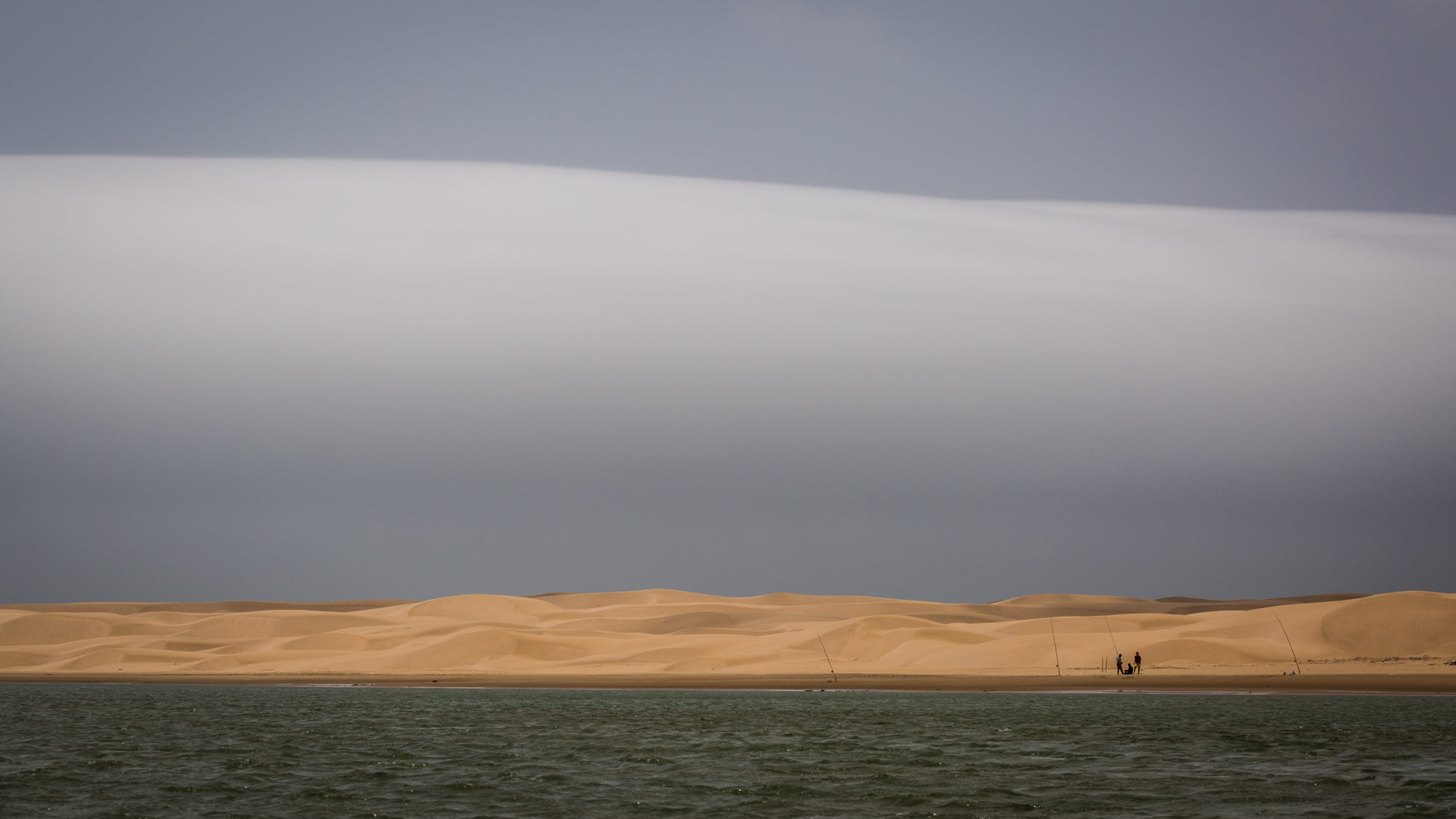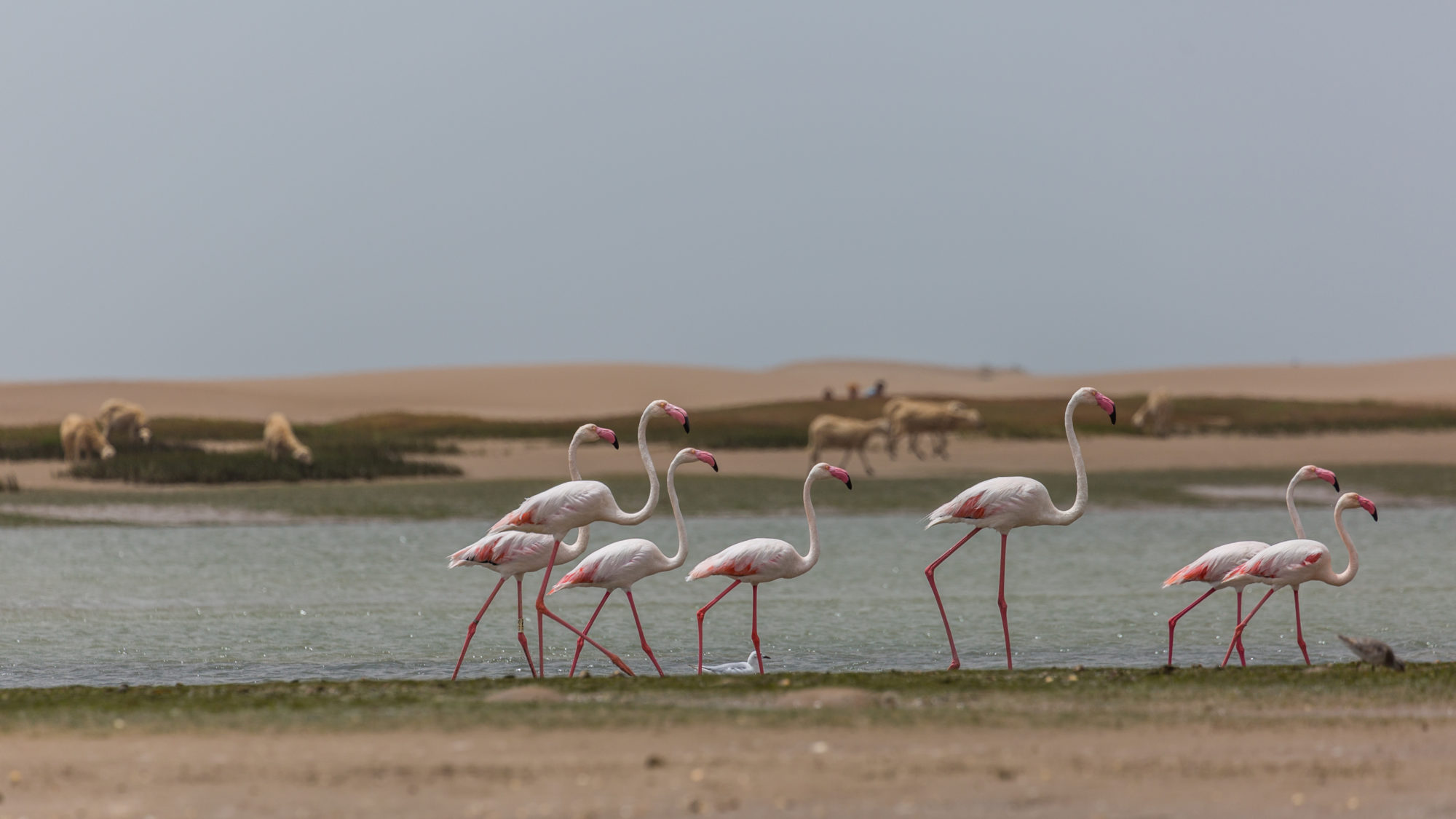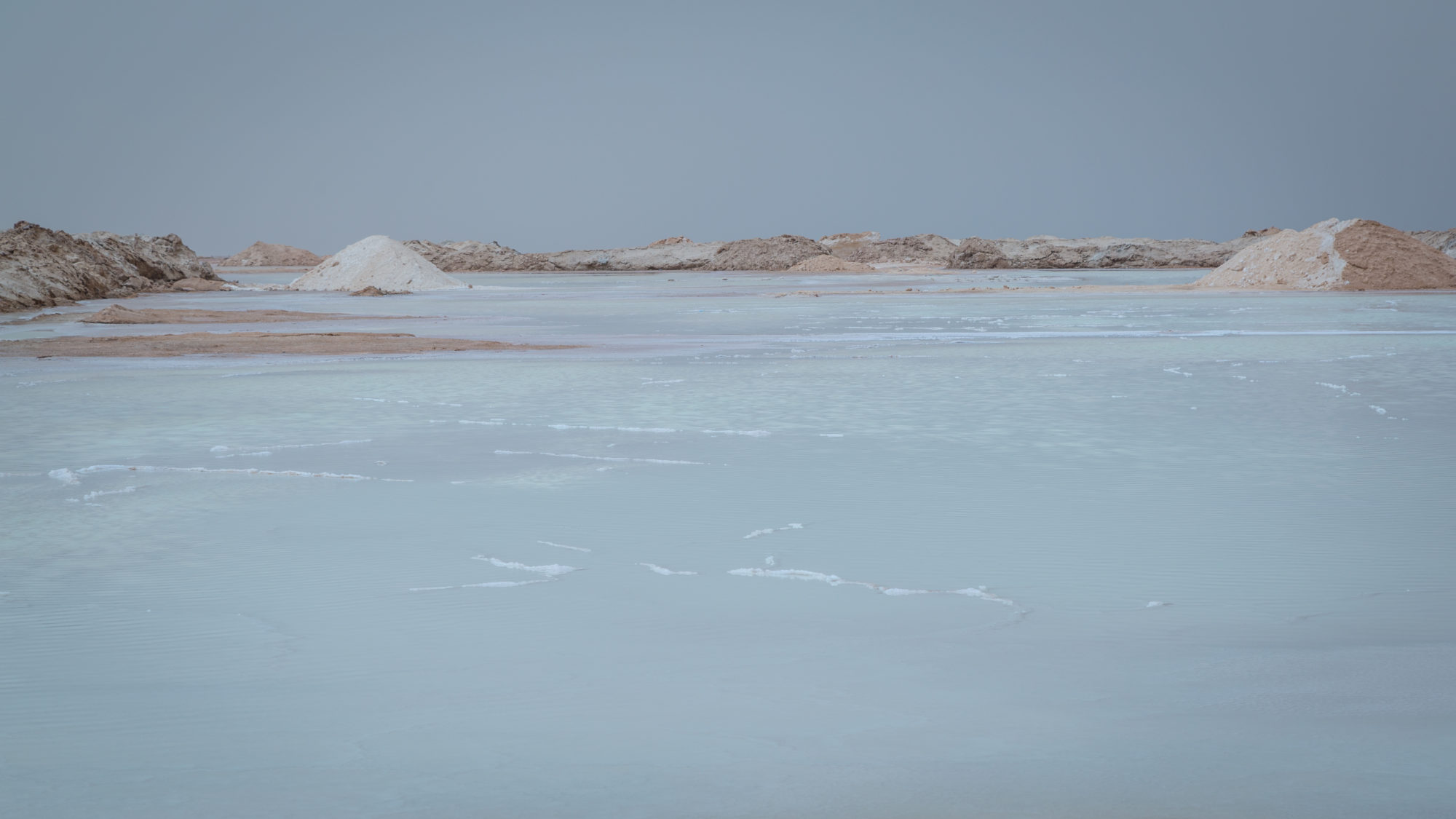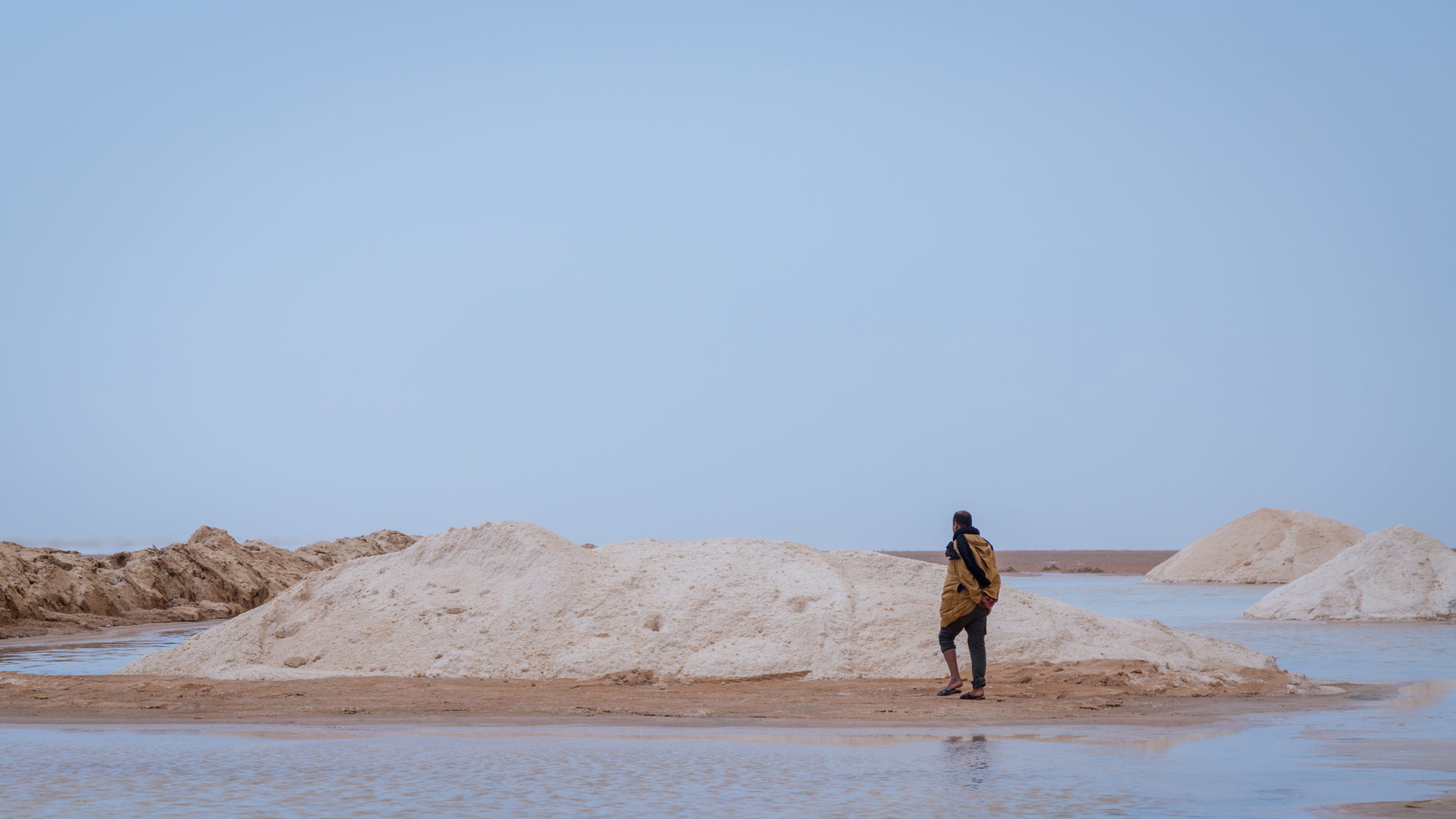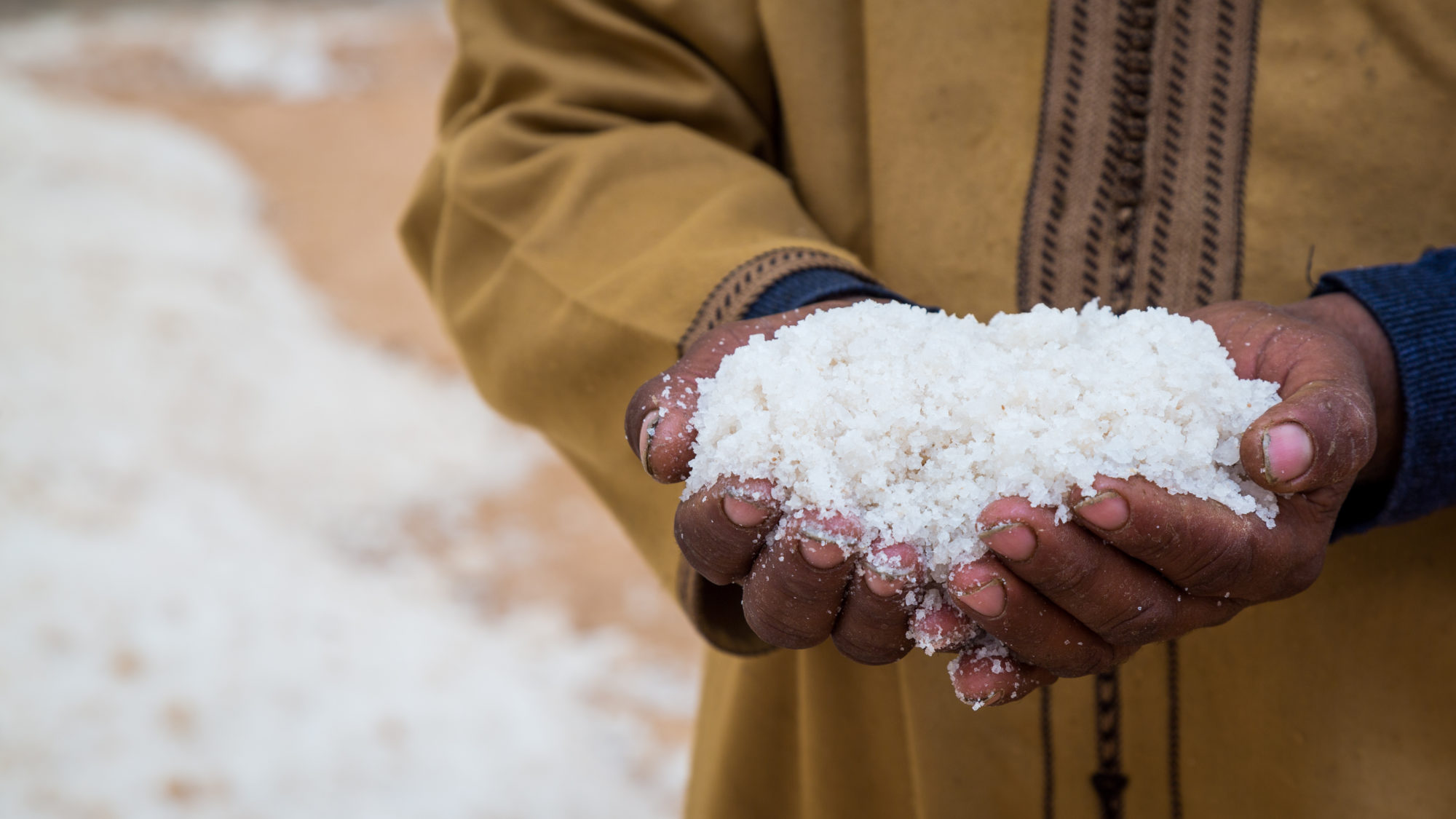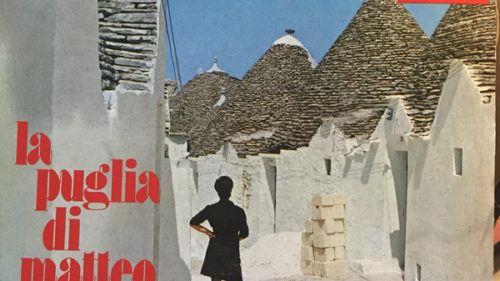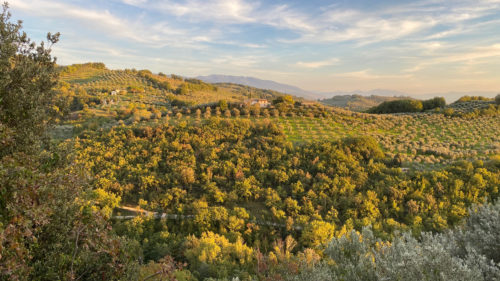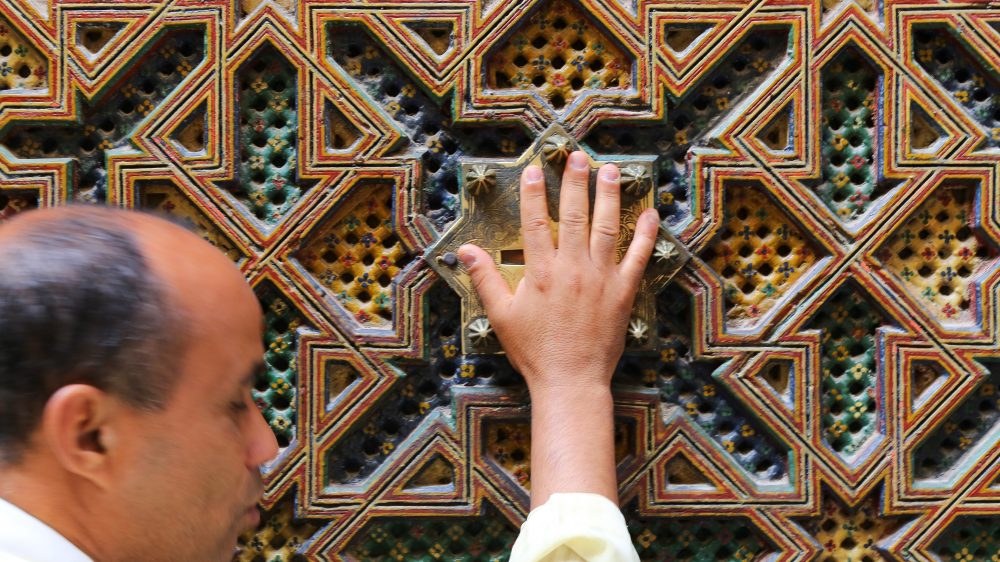Between the Grime & Sublime in Morocco’s Sahara
“I don’t think this guy is coming.”
My watch marks a quarter to eleven, as we stand atop a rocky plateau and a series of crumbling stairs that lead down to a crude wooden pier. Below us, the lagoon of Naila, and beyond it, a sea of pink sand dunes. And beyond that, the tumultuous waves of the Atlantic Ocean.
Up the stairs from the pier trudge a number of fishermen, decked in rubber boots and torn raincoats, porting large plastic jerry cans cut off at the top. With rope tied and cutting into flesh, they carry these tubs filled to the brim with this morning’s haul: an abundant supply of monkfish. I wave in greeting as they walk by, silent, the exhaustion noticeable in their grunts and movements. One fisherman pausing to adjust the position of the haul slung over his shoulders lets fall a monkfish with a splat on the ground. When I point this to him he mutters “doesn’t matter” under his breath. Another, younger fisherman descends back down to his dinghy and slings over his shoulder a remarkable creature weighing at least eighty pounds with a bizarre aspect straight out of a Jules Verne novel, which we later identify as a Guitar fish.
Our car is parked between the cliff’s edge and the row of concrete shacks where the eleven fishermen of the Naila Lagoon and their families live, eking out an existence in Morocco’s largest national park. While UNESCO is reviewing the park for protection status, and talks have been underway for years to promote eco-tourism projects, this fascinating confluence of wetlands, ocean, lagoon, and the dunes of the Sahara desert remains largely unknown, even to Moroccans.
Finally, we spot our fisherman and guide Brahim (not his real name), with a wide smile and wave, navigating his way up the lagoon to the pier where he apologizes for being late. He bounds up the steps with his small catch, and changes out of his waterproof cloak and apron. He returns with some cooking equipment and proudly shows me two glistening sea bass just fished out of the waters which are to be our picnic lunch on this outing.
We have taken a wide detour from our normal plans to explore the Souss-Massa region of southern Morocco. One tarmac road, the N1, stretches nearly 1,000km from Guelmim all the way down to Dakhla, in Morocco’s Western Sahara. Dakhla has been booming as a tourist destination and wind-surfing capital in recent years, but most visitors fly from Casablanca and few undertake the overland drive. After a few hundred monotonous kilometres of little but highway construction and desert scrub, I understand why.
When planning this visit we capped our ambitions and decided to stop just short of Tarfaya (a third of the way down between Guelmim and Dakhla), hoping to see something of this fabled lagoon in what is known as the Khenifiss National Park. The lack of information online, and of virtually any hotel to stay in along the way, reflects the fact that few bother to make this trip. We settled on a tiny pension in the town of Akhfennir on the Northern tip of the park, and organized today’s boat excursion by speaking to the French pension owner, who at the time was stuck in France after Morocco closed its airspace earlier in March (the air borders have since reopened). The pension is clean and welcoming but rather damp and quite simple, in a part of this one traffic-light town that you would normally drive right past. But it was that or sleeping in the car, so here we were.
Years of experience planning and traveling around Morocco hardly prepares me for the breathtaking scene as our dinghy chugs its way out into the lagoon. Colonies of Audoin’s Gull, Marbled Teal, Spoonbills and Oyster-catchers flirt and flutter among some of the most striking flamingos I have ever seen on three continents. The shelter of the lagoon gives way to open waters, backed by dunes that go from pink, to white, to orange as the sun and clouds play their visual tricks.
We bring the boat to land, on a practically deserted stretch with no one other than a small group of Moroccan fishing enthusiasts far down the coast from us, who camp and fish for weeks on end. It feels, literally, like we’ve arrived to the edge of nowhere. Brahim expertly fires up a simple charcoal grill and proceeds to gut the fish, grilling the sea bass with coarsely chopped tomato, roasted green pepper, rock salt and a drizzle of lemon that we eat with our fingers and with pieces of bread, Moroccan style. Afterwards we walk the shoreline and climb a few enormous dunes, taking stock of how lucky we are to be here.
Later in the afternoon, returning to the pier Brahim offers to take us to visit the salt pans of Sabkhat Tazra just outside of Tarfaya. Salt was once such an important commodity on the continent that it was literally traded for gold. The ancient salt caravans of Western Africa united and divided empires on either side of the Sahara from Marrakech to Timbuctou. Our arrival at the enormous salt pans coincides with the hot chergui winds, the currents that blow sand from the Sahara, whipping up out of nowhere, turning the sky a cloudy red. We walk among the pans in this surreal setting, and help ourselves to sackfuls of rock salt to take with us (great for baking fish), before we return Brahim to his home and bid him farewell.
My mind reels from the harshness and emptiness of the surrounding desert, and the dramatic burst of life supported by the lagoon. I’m confounded that at least for the time being, there is nowhere here to send a Trufflepig client, although I suspect one day in the not-too-distant future investments will come with improving infrastructure. For now, the jewel that is the Naila Lagoon and the Khnifiss National Park remain the spoils of a few hardy fishermen and intrepid travelers willing to forgo the trappings of comfort for an experience to remember.
The sands of the Sahara are matched only by Sebastian’s granular approach to trip planning and a love of exploring off the beaten path. Contact him to get your Morocco adventure cooking.
